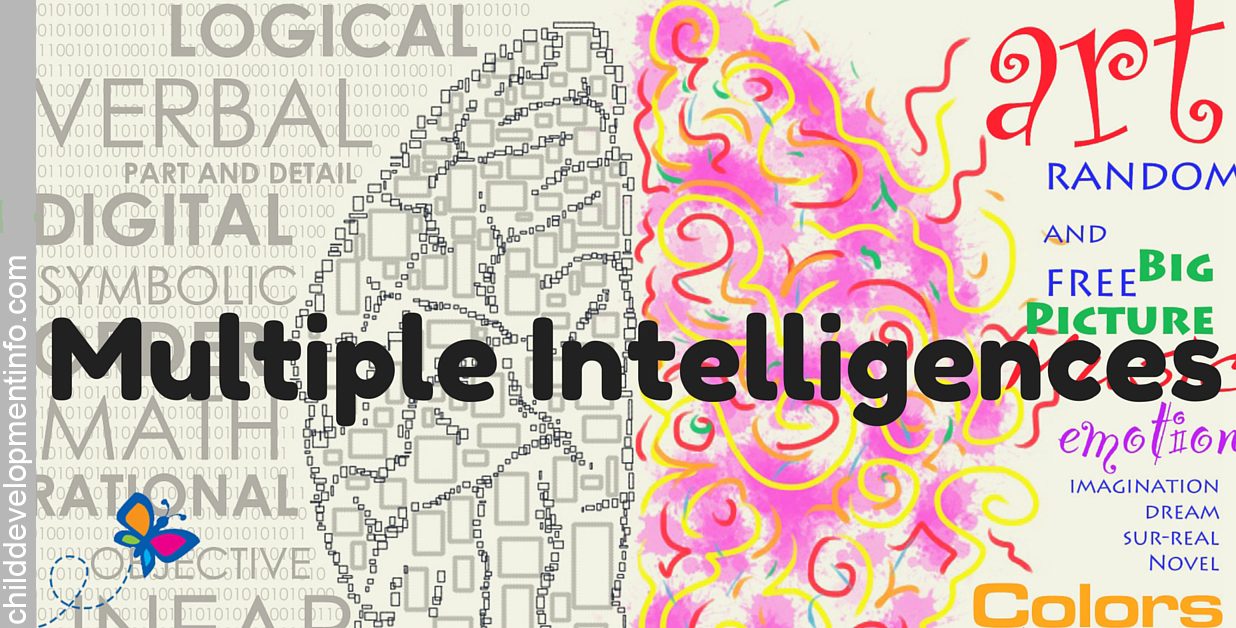It is quite fitting that I should share my views on intelligence while myself and the rest of the UK await the results of our applications for primary school places. At the moment, I cannot escape parents discussing which schools are the best and how their choice of school will give their children the best start. This is a normal feeling we should all have, but is often based on a belief that we want our kids to have a high Intelligence Quotient (IQ). IQ has, in many cases, become the standard by which society measures one’s ability, and we are quick to say that a particular person is not smart as they cannot read, spell, obtain a degree, understand logic, etc. But do we ever stop to consider different learning streams and those different types of intelligence entrenched in multiple intelligences?

In my previous post I talked about Signature Strengths and the fact that character strengths like temperance, courage and wisdom are most essential to who we are and that we each have different levels of these strengths within us. Reading the New York Times´ fantastic post How to Raise a Creative Child. Step One: Back Off has led me down a path of discovery, to identify what I can do to help my children find their true calling in life. But uncovering this not only comes down to a child’s signature strengths but also in identifying what multiple intelligences they fall into.
Alfred Binet of France created intelligence testing. He was asked by the French government to come up with a test to separate the slower learners from the gifted children. And in 1905 (revised in 1908 and 1911), Binet and Theodore Simon came up with the Simon-Binet scale to assess mental ability. Ever since the inception of intelligence testing, the merits and validity of it have been challenged.
Binet’s sole purpose in creating the test was to determine which children had special educational needs. It was never intended to rank students “according to mental worth”. Binet’s intelligence testing is widely considered to be culturally biased and can be taught and learned in order to improve scores.
An example of this cultural bias was in the testing of Jamaican immigrants coming into the UK in the 1950s. Because they scored poorly in IQ tests an assumption, and so a stereotype, was founded. This led to the commonly-held view that all black people were of an overall lower intelligence and, therefore, inferior to whites. However, black immigrants had been educated very differently. The questions that surfaced concerned how anyone could pass an IQ test when they hadn’t learned to read or could not know the context in which the questions were designed.
These tests in their natural form are very limited and biased in measuring how smart people are. I fell into this precise mentality of thinking when coaching elite athletes and made a comment to my very wise mentor that “my athletes were not intelligent, because they could not understand simple concepts”. My mentor informed me that humans have different learning streams and I had to find what that was for each of my athletes in order to get them to understand what I was trying to say. From this I launched myself into understanding learning streams and, in the process, I discovered Multiple Intelligences.

Multiple Intelligence is the brainchild of Professor Howard Gardner. Gardner developed his theory of multiple intelligences in 1983, where he questioned the concept of intelligence as traditionally thought of by Binet and the standard intelligence test. Binet’s idea that intelligence was just to do with problem solving seemed too much like putting all the intelligence eggs in one basket. Using Binet’s ideas Gardner developed Multiple Intelligences (or competencies), which relate to a person’s unique set of capabilities and ways they might prefer to demonstrate them. Gardner’s Multiple Intelligences were identified as:
- Linguistic Intelligence & Verbal Intelligence: Learning, using and comprehending the written or spoken words.
- Logical Mathematical Intelligence: The ability to think logically and solve mathematical problems. The type of intelligence that Binet identifies (IQ).
- Spatial Visual Intelligence: These people have the ability to easily use and recognise patterns and space.
- Bodily and Kinesthetic Intelligence: People with this intelligence are supple, have great spatial awareness and are brilliant in coordination, balance and skills involving the body.
- Musical Intelligences: People with this ability are sensitive and have a great understanding of pitch, rhythm and sound.
- Interpersonal Intelligence: These people have a special awareness of empathy, can communicate and understand the needs of others.
- Intrapersonal Intelligence: This is where there is an understanding and accepting of oneself.
- Naturalist Intelligence: The ability to identify patterns in nature and determine how individual objects or beings fit into them.
- Existential Intelligence: The Intelligence of big questions. For example, “Who am I?”, “What is love?”, “Why do people die?”, “Is there more to life?”. These are people that are philosophers and thinkers.
Howard Gardner’s findings have had a massive impact on education and offered the world a better understanding of a holistic view of intelligence in human beings. What Binet developed as a tool to determine which children needed help and extra support, has been indoctrinated into us to believe that Logical Mathematical Intelligence (IQ test version) is what we must aim for and expect from our kids. While we appreciate and love watching sports men and women, we often refer to them as not being very clever or smart, because what we associate with being smart is a high IQ. Have we ever stopped to think that only a small percentage of society has the ability to have Bodily and Kinesthetic Intelligence?
The fascinating and interesting point in all this is that many parents only associate intelligence with academic intelligence and ignore all the signs of their child’s calling in relation to the type of intelligences they have. They fail to see and identify with any of Gardner’s Multiple Intelligences. Want to help your child? Understand Multiple Intelligences!
Sources
- Changes in Child Psychology, (2011), Binet-Simon Scale. Accessed 13th March 2016
- Gardner, H. Howard Gardner’s Theory of Multiple Intelligences, Faculty Development and Instructional Design Center, Northern Illinois University, Illinois. Accessed 13 March 2016
- Grant, Adam, (30 January 2016), How to Raise a Creative Child. Step One: Back Off, New York Times. Accessed 13th March 2016
- Harvard Faculty Department, Howard Gardner, Harvard Graduate School of Education. Accessed 29th March 2016
- Hub Pages, Intelligence & Intelligence Testing, Accessed 29th March 2016
- Shazwellyn (16 March 2015), Psychology 101: What Are The Components In Intelligence? A Different Explanation For Multiple Intelligences, Hub Pages. Accessed 29th March 2016
- Plucker, Dr Jonathan (8 November 2013) Alfred Binet, Human Intelligence. Accessed 29th March 2016
- Plucker, Dr. Jonathan (8 November 2013) Theadore Simon, Human Intelligence. Accessed 29th March 2016
- Oxford Dictionaries, Intelligence, Oxford Dictonaries. Accessed 29th March 2016


